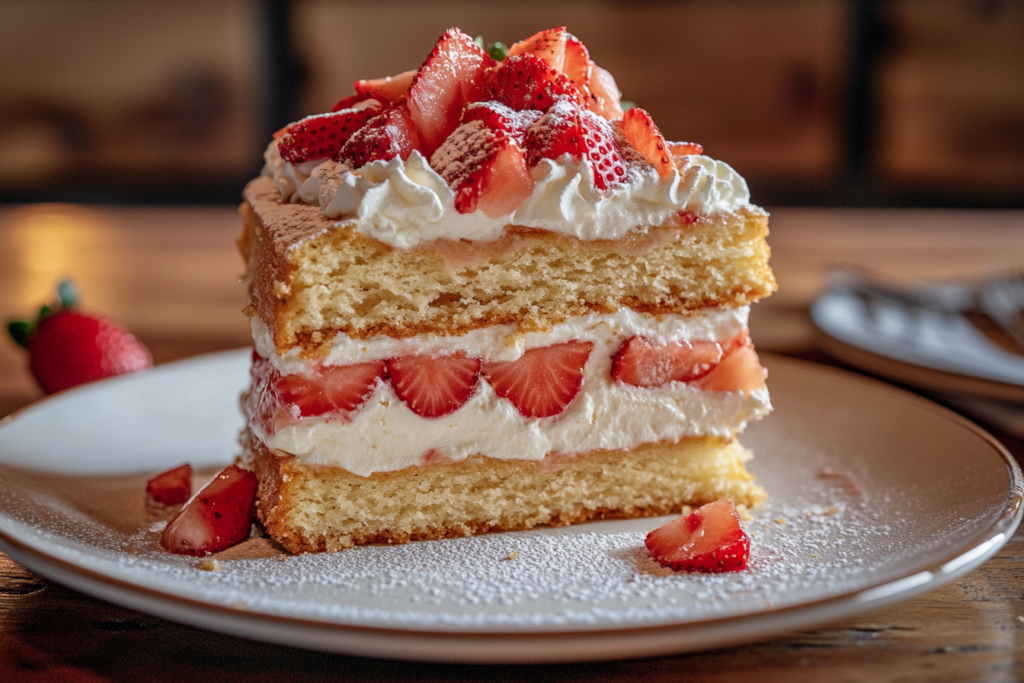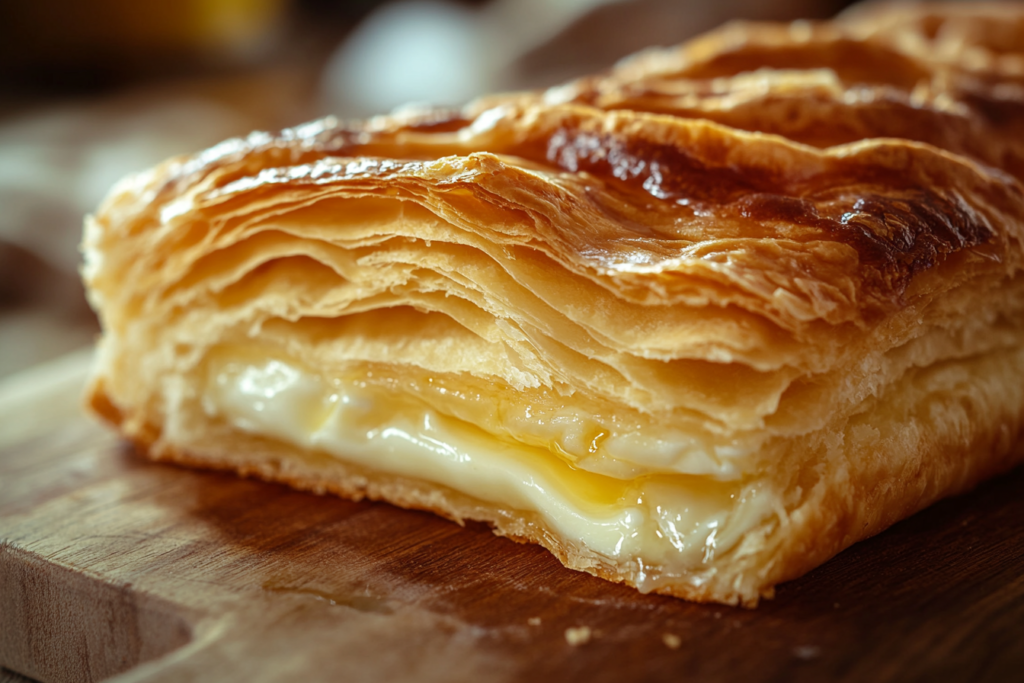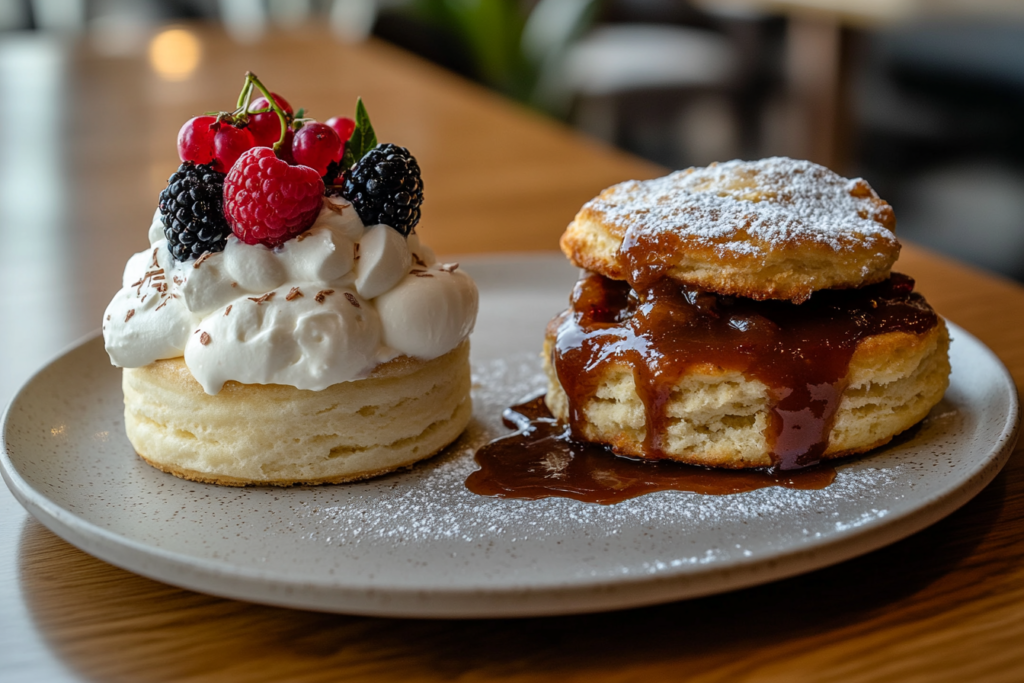Table of contents
- A Tale of Two Baked Goods – Is Shortcake the Same as a Biscuit?
- What is a Shortcake?
- What is a Biscuit?
- Key Differences Between Shortcake and Biscuits
- Are There Any Overlaps Between the Two?
- Global Perspectives: Regional Takes on Shortcake and Biscuits
- Frequently Asked Questions (FAQs)
- Conclusion: A Delicious Debate Worth Tasting
A Tale of Two Baked Goods – Is Shortcake the Same as a Biscuit?
Imagine you’re at a bakery, scanning the menu for a sweet treat or a hearty side to complement your meal. You notice “shortcake” and “biscuit” on the list, and a thought pops into your head: Aren’t they practically the same thing? Both are crumbly, buttery delights often served with something decadent like strawberries or gravy. But dig a little deeper, and you’ll find there’s more to these baked goods than meets the eye. Let’s unravel the mystery behind shortcakes and biscuits, exploring their origins, ingredients, and unique charm.
What is a Shortcake?
To truly understand shortcake, you need to think of it as the fairy-tale dessert that often steals the show at summer gatherings. But is it just a sweet biscuit, or is there something more magical to it?

Origins and History of Shortcake – The Beginnings of This Biscuit-Like Dessert
Shortcake’s history can be traced back to Europe, where early versions were simple, sweetened breads or biscuits. The name itself hints at the defining feature: “short” refers to the high fat content, typically from butter, which creates that crumbly texture we all love. Over time, this rustic treat made its way to America, where it was embraced as a perfect base for fresh, juicy strawberries and whipped cream—a combination that has become iconic.
The first known recipe for strawberry shortcake appeared in an American cookbook in the mid-19th century. Since then, it has evolved, but its essence—a slightly sweet, buttery cake designed to pair beautifully with fruit—remains unchanged.
Traditional Ingredients of Shortcake – What Makes It Different from a Biscuit?
The classic shortcake recipe includes:
- Flour: All-purpose is common, but some variations use cake flour for a softer crumb.
- Butter: This is the star ingredient, lending richness and that signature “short” texture.
- Sugar: Just a hint, as the sweetness often comes from the toppings.
- Leavening Agents: Baking powder or soda gives it a light rise.
- Milk or Cream: These liquids bind the ingredients together and add moisture.
Unlike a typical cake, shortcakes are denser and slightly crumbly, making them the perfect vehicle for soaking up syrups and creams.
Modern Variations of Shortcake – How This Sweet Treat Has Evolved
Modern bakers love to experiment, and shortcake is no exception. Today, you can find variations made with everything from almond flour to coconut oil for gluten-free or dairy-free options. Some recipes even add flavor twists like lemon zest, vanilla, or spices.
Instead of strawberries, you might encounter shortcakes topped with peaches, blueberries, or even savory ingredients like roasted tomatoes and basil. Yes, shortcake can step out of the dessert realm into the savory world, proving its versatility.
What is a Biscuit?
Biscuits, on the other hand, are the ultimate comfort food. Whether slathered with butter, smothered in gravy, or simply served alongside a meal, biscuits hold a special place in the hearts of many. But what makes a biscuit a biscuit?

The Evolution of Biscuits Across Cultures – Biscuit vs Shortcake Origins
The word “biscuit” has different meanings depending on where you are. In the UK, biscuits are what Americans call cookies—crisp, sweet, and perfect for tea. In the US, biscuits are soft, flaky, and savory, more akin to a scone. This divergence dates back to colonial times when British immigrants adapted their recipes to fit the ingredients and tastes of the New World.
The American biscuit’s rise in popularity is closely tied to Southern cuisine, where it became a staple thanks to its simplicity and versatility.
Key Ingredients That Define a Biscuit – What Sets It Apart from Shortcake?
A biscuit’s magic lies in its minimal ingredients and precise technique. Here’s what goes into the classic recipe:
- Flour: Typically all-purpose or self-rising, which already contains a leavening agent.
- Fat: Butter, shortening, or lard is cut into the flour for a flaky texture.
- Leavening Agents: Baking powder and baking soda create the light, airy layers.
- Liquid: Buttermilk or milk moistens the dough while adding tangy flavor.
The hallmark of a good biscuit is its flakiness, achieved by carefully folding the dough to create layers.
Biscuits in Modern Culinary Traditions – Savory and Sweet Uses
While biscuits remain a Southern classic, they’ve found their way onto menus around the world. Modern recipes might incorporate cheese, herbs, or even sweet glazes, pushing the boundaries of tradition.
Biscuits are also no strangers to convenience. Refrigerated biscuit dough has made it easier than ever to enjoy this treat, though purists argue that nothing beats a homemade biscuit fresh out of the oven.
Key Differences Between Shortcake and Biscuits
So, where does that leave us? Are shortcakes and biscuits truly different, or are they culinary cousins with subtle distinctions? Let’s break it down.

Texture and Flavor Comparison – Biscuit vs Shortcake
Shortcakes are slightly sweeter and denser, designed to complement sweet toppings like fruits and cream. Biscuits, on the other hand, are more savory, light, and flaky, perfect for soaking up gravy or butter.
Think of shortcake as the dessert diva and biscuits as the humble sidekick—they both shine but in different roles.
Preparation Methods and Techniques
The preparation of shortcakes and biscuits might look similar—both involve cutting fat into flour and adding liquid—but the techniques differ slightly. Shortcakes often have more sugar and sometimes an egg for richness, while biscuit dough is kept simple to emphasize flakiness.
Baking temperatures and times also vary. Shortcakes may bake a little longer to achieve a firmer structure, while biscuits are baked quickly at high heat for that tender crumb.
Serving Styles and Culinary Applications
Shortcake is synonymous with dessert, often topped with fresh fruit and whipped cream. Biscuits, however, are a versatile staple. They’re served with savory dishes like fried chicken, transformed into breakfast sandwiches, or eaten plain with a dollop of honey.
Are There Any Overlaps Between the Two?
Now that we’ve dived deep into what makes shortcake and biscuits unique, let’s address the elephant in the room: Do these two ever overlap? After all, both involve similar ingredients, preparation techniques, and that delicious crumbly texture. Here’s where the lines blur, and the fun begins.
Shared Ingredients and Techniques – Biscuit and Shortcake Similarities
If you were to look at a shortcake and biscuit recipe side by side, you’d see some uncanny similarities. Flour, fat, leavening agents, and milk are the core building blocks for both. Even the technique of cutting butter into the flour to create that “short” texture is shared. This overlap often leads to confusion, especially for those new to baking.
However, the devil is in the details. While the basic ingredients are nearly identical, the proportions differ. Shortcakes typically include more sugar for sweetness and sometimes an egg for added richness. On the flip side, biscuits rely heavily on buttermilk to achieve their tangy, savory flavor.
Occasions Where Both Are Used Interchangeably – Biscuit or Shortcake, What Works?
Here’s where things get interesting: in certain recipes, you can swap one for the other with minor tweaks. For instance, a biscuit base can be sweetened slightly and used for strawberry shortcake in a pinch. Similarly, a shortcake dough can be toned down in sweetness and paired with savory toppings.
However, the result won’t be identical. A sweetened biscuit will lack the density of a true shortcake, while a savory shortcake might feel a tad rich compared to a traditional biscuit. Think of it like using a Swiss Army knife—it works, but it’s not always the ideal tool.
Global Perspectives: Regional Takes on Shortcake and Biscuits
When it comes to baked goods, cultural context is everything. Shortcakes and biscuits have evolved in fascinating ways around the world, shaped by local ingredients, traditions, and tastes.
The American Perspective
In the United States, biscuits and shortcakes enjoy a special status. Biscuits are a Southern staple, paired with everything from fried chicken to sausage gravy. Shortcakes, on the other hand, are firmly planted in the dessert category, with strawberry shortcake reigning supreme as a summer favorite.
Interestingly, in some parts of the U.S., particularly the South, people often use biscuits as a base for shortcake-like desserts. This crossover highlights just how versatile these baked goods can be.
UK vs US Interpretations
The United Kingdom and the United States offer two very different takes on these baked delights:
- UK Biscuits: As mentioned earlier, biscuits in the UK are what Americans call cookies. Think crunchy, sweet treats served with tea.
- US Biscuits: Soft, flaky, and buttery, these are nothing like their British counterparts. They’re more akin to what Brits would call scones.
- Shortcake in the UK: While less common, shortcakes in the UK often resemble dense, crumbly scones, typically enjoyed with jam and cream.
This transatlantic difference is a classic case of the same word meaning very different things!
Other Global Variations: Europe and Beyond
Beyond the English-speaking world, you’ll find variations that echo the essence of shortcakes and biscuits:
- France: Think of the sablé, a crumbly, buttery cookie that resembles shortcake in texture.
- Italy: Biscotti are dry and crunchy, much closer to British biscuits than American ones.
- Japan: Here, shortcakes are light, airy sponge cakes, often decorated with whipped cream and strawberries—quite a departure from the dense, crumbly original.
These global takes underscore the adaptability of these baked goods, proving that no matter where you go, people love their flour, butter, and sugar in some form or another.
When exploring the delightful differences between shortcake and biscuits, you might want to check out the Bisquick Shortcake Recipe for a quick and easy way to whip up a classic shortcake base. If you’re curious about sweet sauces that could complement your shortcake, the Old-Time Chocolate Gravy Recipe offers a nostalgic twist that pairs beautifully with crumbly baked goods. Similarly, for biscuit enthusiasts, the Chocolate Gravy Recipe – Southern Classic might inspire a savory-sweet pairing that highlights the versatility of biscuits. These recipes and tips can add new layers of flavor to your baking adventures!
Frequently Asked Questions (FAQs)
To wrap up, let’s tackle some of the most common questions about shortcakes and biscuits. These little nuggets of wisdom might just inspire your next baking adventure.
What’s the Difference Between a Biscuit and a Shortbread?
The key difference lies in their texture, ingredients, and use. Biscuits (in the American sense) are soft, flaky, and often savory, made with flour, butter, buttermilk, and leavening agents like baking powder. They’re versatile, served with sweet toppings like jam or savory pairings like gravy. Shortbread, however, is a dense, crumbly, and buttery cookie made with just flour, butter, and sugar. It’s sweet, lacks leavening agents, and is typically enjoyed as a standalone dessert or with tea.
Is Shortbread a Biscuit or a Cake?
Shortbread is a type of biscuit (cookie), not a cake. Its signature crumbly, dense texture comes from the absence of leavening agents like baking powder or eggs, which are common in cakes. Unlike cakes, which are soft, airy, and often layered, shortbread is rich and compact—perfect for tea-time treats.
Are Shortbread and Shortcake the Same Thing?
No, shortbread and shortcake are entirely different. Shortbread is a crisp, buttery cookie made with flour, sugar, and butter. It’s enjoyed on its own as a dessert. Shortcake, by contrast, is a sweet, crumbly cake or biscuit, often served as a base for desserts like strawberry shortcake. While shortbread is a cookie, shortcake is more like a dessert-ready biscuit, designed to pair with toppings like whipped cream and fruit.
What Is Shortcake Similar To?
Shortcake is most similar to a sweetened biscuit or a scone. All three share a crumbly texture and common ingredients like flour, butter, and milk. However, shortcake is sweeter and slightly denser, making it a perfect dessert base. Imagine a cross between a biscuit and a scone, topped with fresh fruit and cream—that’s shortcake!
Conclusion: A Delicious Debate Worth Tasting
So, is shortcake the same as a biscuit? Not exactly, but the two share a bond that’s hard to deny. They’re culinary cousins, each with its own role to play in the world of baked goods. Whether you prefer the crumbly sweetness of a shortcake or the flaky versatility of a biscuit, one thing’s for sure: both are downright delicious.
Why not try making both at home and decide for yourself? After all, life is too short not to indulge in buttery, floury goodness. Happy baking!

